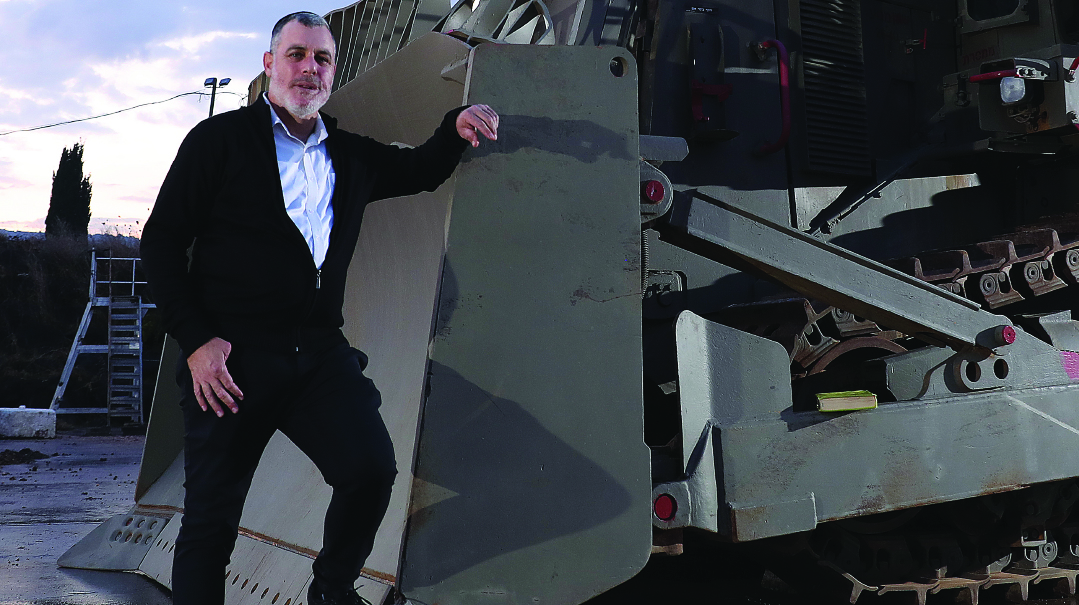Best Face Forward

Just 20 seconds after engineering Corps officer Boaz Porat declared all clear, a missile crashed into him, smashing his face and shattering his body. And in the miracle of his healing, he’s never stopped believing in the greatest gifts of all

Photos: Menachem Kalish
"What do we do if Boaz Porat’s head flies on this one?”
It was May of 2000, and the IDF was preparing to dismantle its garrisons and withdraw from the security zone in Southern Lebanon created 15 years before, as a buffer against attacks after the Lebanon War. For Engineering Corps officer Boaz Porat, that meant leaving his home in Karmiel and crossing the northern border for a slew of operations that would secure the border before the anticipated Hezbollah takeover of the area: closing down routes and bridges, building embankments, and enacting protective barriers. His commanding officer knew that he was sending Boaz into the danger zone — but had no idea how prophetic that question of his would eventually turn out to be.
Still, it wasn’t really a new challenge for Boaz Porat. He’d been making dangerous trips over the border for the last ten years, in his capacity as supervisor of the IDF’s engineering unit in the north of the country that maintains heavy machinery, clears roads, and neutralizes mines and explosives. He’d be there somewhere in the darkness of enemy territory, driving in a vehicle that can’t muster more than 10 kph, working with his trademark calculated thoughtfulness and patience. Sometimes he’d have to extract a tank that had gotten stuck or repair a caterpillar track that came apart in a hostile village. Other times there were more complex operations — like dismantling minefields and incendiary devices — occasionally performed while bullets whistled around his head.
“When we were called up to secure the area during the pullout, I’m not going to say it wasn’t a bit frightening,” Boaz Porat tells Mishpacha more than 20 years later. He had a three-year-old daughter and an expectant wife at home, and while every mission into the Security Zone was nerve-wracking, this one was especially complex.
“Every incursion across the border really was a question of life and death,” he explains. “In my job, working with heavy machines like tractors and backhoes, you’re basically a slow-moving target in enemy territory. For me, when my job was done and I safely exited Lebanon, it felt like my personal Yetziat Mitzrayim.”
As he gazed from the northern border to the Lebanese zone behind him, amazed at the fact that the operation had gone perfectly and thanking Hashem for being with him during those many hours isolated in hostile territory, he declared, “From now, this head that did not fly off will be covered with a kippah to protect it” — and he put on a yarmulke for the first time.
It wasn’t exactly that he’d just discovered G-d, though. It was the sealing of a process that had started a few years before, when he and his wife, Rivka, were first married and moved to Karmiel. He’d grown up on a kibbutz — not hostile, but uninformed — yet she’d grown up in a Shabbos-observing home, and told him that she’d be keeping Shabbos, while he could do what he pleased. Boaz didn’t exactly jump into Shabbos himself, but he did feel an attachment to tefillin, and was sometimes called to complete a minyan. From there, the two of them began attending local shiurim and initiating ties with the town’s warm and welcoming frum sector.
Putting on a yarmulke was the first public statement of his realignment.
At the time, though, he didn’t know that not only would he desperately need that protection, but that those early years of spiritual strengthening would give him the reserves of inner resilience and fortitude to deal with what would come next.
Oops! We could not locate your form.







